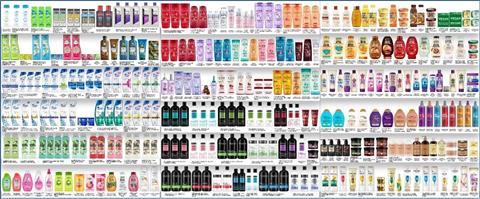Everything old is new again. As a discipline, category management faces numerous challenges today – but none quite as taxing as the challenge of stagnation, maintains Lindsay Parry, insight commercial director at Dunnhumby.
Over the past few decades, the dynamics of grocery retail have become almost impossibly complex. Globalisation has caused supply chains to become broader and more intricate. Priorities have shifted, away from pure cost savings and towards themes like sustainability, innovation, and diversity. And shopper behaviours have started to change faster and more deeply.
Despite all this – and despite significant advances in technology – category management as a whole remains largely unchanged. The core practices and processes are much the same as they were at the start of the 2000s, leading some to question whether the discipline is even still relevant [Procurement Leaders].
While column inches pondering ’the death of category management’ might be plentiful, though, the end isn’t here yet. Over the next decade, all signs suggest that a genuine revolution will take place at the heart of the function. Major developments in fields like data analytics and artificial intelligence (AI) mean that category managers will soon be equipped to work more efficiently and effectively than ever before.
Crucially, this won’t just be about category managers doing the same things faster, though. Instead, this revolution promises to take them into new, and far more strategic territory.
More time for more valuable work
Today, the life of a category manager is one that’s dominated by decisions. From category definitions and the setting of strategic goals, through to pricing, promotions and more, category managers typically spend a huge amount of time working out the best path forwards for their brand. That’s not going to change. But as time goes by, fewer and fewer of those decisions will be made by category managers alone.
“Category assortment is a complicated process, requiring a great deal of number crunching. AI can speed up that process considerably”
Take category assortment, a core responsibility for anyone in a category management role. Today, that’s a complicated process, and one that requires a great deal of number-crunching. There’s historical sales data to analyse, market research to conduct, and a range of customer needs to consider. And that’s before data on factors like seasonality and localisation are taken into account.
AI can speed that process up considerably. With the right algorithms in place, AI can take all of that information and generate recommendations in a fraction of the time that it would take a human to do. Moreover, it can spot patterns and trends that even the most experienced category manager might not.
Category assortment is just one example, though. The same principles can be applied to everything from range optimisation through to behavioural analysis. Crucially, this isn’t about AI ’taking jobs‘ or pushing humans out of the process altogether – a real person will always be needed to validate the recommendations made by a machine. What this is about, though, is giving category managers more time to focus on higher value and more important work.
One of the key priorities for any category manager, for example, is the creation of an overarching mid-term strategy. Ultimately, they need to help the rest of the business understand which shoppers it should be appealing to, which innovations could disrupt the category, and which trends it will be expected to keep pace with.
Clearly, these are high-level, strategic concerns, but each of them still needs to be built on granular insights – and it’s here that we need to turn to the subject of planograms.
The problem with planograms today
As their role continues to evolve, category managers will need to equip themselves with the insights they need to make better and more strategic decisions. That’s particularly true when it comes to the shelf – from which products make it into which stores and where they sit, all the way through to how they appear alongside competing goods. More specifically, category managers need to know that the vision they’ve set is being executed effectively in-store.
Planograms can deliver huge value here. Used effectively, they can help category managers adapt to market changes, improve the customer experience, and strengthen their relationships with retailers. At the same time, planograms are rarely used as often or as fully as they could be – and there are a few good reasons for that.
Firstly, there are the sheer logistical constraints. Sending field sales teams out to get a view of multiple stores and formats is inherently slow. There’s also the quality conundrum, with visual data typically taking the form of sparse wireframes provided by retailers or poorly taken photos from on-the-ground reps. Finally, even when retailers do have decent planograms of their own, they’re rarely shared with brands in a user-friendly way.
The result is that something that should bring simplicity and clarity often ends up creating additional complexity. Because of that, category managers can end up missing out on a wealth of data that could be used to empower their decisions.
Supercharging decisions with smarter tools
This is where the next generation of technology and AI comes back into the picture. The planogramming process isn’t isolated from the advancements happening across the industry, and that’s good news for category managers who want to supercharge their performance with cutting-edge insights.

Already, for instance, planogramming tools exist that can quickly and easily create visualisations of new products in situ alongside existing ones. Tools that can compare sales and trends data in order to make smart recommendations about expanding a product’s share of the shelf. Tools that can provide field sales teams with live access to in-store planograms, and deliver significant compliance improvements as a result.
The last of those points is particularly important. In this next era of category management, being fit for the future will mean being able to ensure that strategic decisions are realised at the shelf. A better approach to planogramming – while only the first step on a far longer journey – is the perfect place to start.
How Planogram Publisher is making a difference
Planogram Publisher gives brands access to granular store level planogram data in an easy-to-access tool. It automatically creates high-resolution planogram visuals enabling category managers to see what is on fixture and where at store level, alongside KPI measures on ’at shelf‘ visibility.
Powered by store-level, live planogram data from Tesco, Planogram Publisher allows brands to more efficiently understand product in-store positioning by reducing the need for in-store visits.
Planogram Publisher is a tool developed in partnership by dunnhumby and VST (Virtual Store Trials) and is exclusive to Tesco Media and Insight Platform in the UK.
Learn more at www.go.dunnhumby.com/planogram-publisher
Tesco Media and Insight Platform is a partnership between Tesco, the UK’s largest grocery retailer, and dunnhumby, a global leader in Customer Data Science. Together, we always put the customer first.























